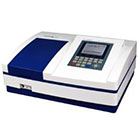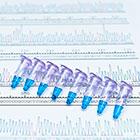Next-Generation Sequencing (NGS)
Next Gen Sequencing is an umbrella term describing a collection of high-throughput methodologies and platforms used for the determination of the sequence of base pairs in DNA or RNA.
What is Next-Generation Sequencing (NGS)?
Next-generation sequencing (NGS) describes several techniques used to determine the sequence of DNA or RNA. Scientists can use that sequencing data to study genetic variations or mutations associated with diseases or biological conditions. Because NGS allows scientists and researchers to sequence thousands or even millions of DNA molecules simultaneously, it has significantly reduced the cost and the amount of time needed to sequence genes. That has led to dramatic advances in clinical diagnostics, genetic diseases, and personalized medicine.
Sanger Sequencing vs. Next-Generation Sequencing
Sanger sequencing and next-generation sequencing (NGS) are similar in concept, but they have profound differences. Both next gen sequencing and Sanger sequencing involve using DNA polymerase to add fluorescent nucleotides one at a time onto a growing DNA or RNA template strand. The fluorescent tags identify each incorporated nucleotide.
Where these two RNA and DNA sequencing methods differ is in each method’s sequencing volume. The Sanger method sequences DNA or RNA one strand at a time, while next-generation sequencing – initially called “massively-parallel sequencing” – can simultaneously sequence hundreds to thousands of genes at one time.
Sanger sequencing reagents produce exceptional results, and Sanger sequencing is still considered the “gold standard” for clinical research sequencing with a 99.99% accuracy rate. However, NGS technology in clinical research labs is expanding as labs benefit from their higher throughput and cost-efficiency.
Advantages of NGS
Next-generation sequencing provides multiple benefits when compared to Sanger sequencing, including:
- Can sequence an entire genome at the same time
- Faster turnaround time
- More cost-effective
- Requires lower sample input
- Improved accuracy and reliability
- Higher sensitivity allows detection of variants at lower frequencies
Typical NGS Workflow
Whether you are conducting DNA sequencing or RNA sequencing, your workflow will follow the same basic steps:
- Library preparation includes fragmenting DNA or RNA from the rest of the sample, preparing DNA or RNA for sequencing by adding adapters and checking all fragments for size and quality before adding them to the sequencing library
- Clonal amplification generates multiple copies of target areas of interest within a DNA or RNA sample to ensure they provide a robust and detectable signal during the sequencing process.
- Sequencing is the process that tells scientists what genetic information each DNA or RNA molecule contains.
- Data analysis is the process of applying a wide range of analytical methods to DNA or RNA sequencing information to determine its structure, function, features, or other characteristics.
Featured Suppliers
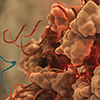
New England Biolabs - shaping the landscape of bioscience research
NEB offers a broad portfolio of reagents designed to streamline RNA analysis and genome-editing workflows.

Beckman Coulter, dedicated to advancing and optimizing the laboratory
Beckman Coulter's precision instruments are used by researchers to study complex biological problems, including causes of disease and potential new treatments.
Nucleic Acid Extraction & Purification
The accuracy and reliability of research and diagnostic results depend on the initial materials used during sequencing. You can help obtain the maximum nucleic acid yield and purity by using extraction and purification products from Avantor.®
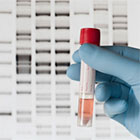
Nucleic Acid QC & Storage
Quality control is critical to ensure data is not affected by any contaminants. Browse the equipment we offer to help you quantify samples and maintain nucleic acid stability during storage.
Library Construction
Find all the tools you need to efficiently prepare your nucleic acid target, RNA, or DNA for the specific sequencing system your research requires.
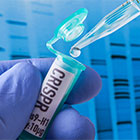
Library Quantification & QC
Avantor delivers accurate quantification and reliable quality control you can depend on to ensure successful sequencing.
Featured Products

Beckman Biomek®
A compact, nonsterile, semi-automated liquid handler ideal for smaller laboratories. Standardize daily pipetting routines, maintain sample quality, and generate repeatable, reliable results.
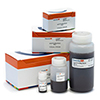
Quantabio sparQ PureMag Beads
One for All and All for One. High recovery DNA and RNA cleanup, consistent and efficient size selection. Stablility at room temperature.

COVID Sequencing Starter Pack & Kits
Get everything you need for rapid, end-to-end sequencing and analysis of COVID-19 samples in a simple, affordable package.

NEB® Monarch® Genomic DNA Purification Kits
A comprehensive solution for cell lysis, RNA removal, and purification of intact genomic DNA (gDNA) from a wide variety of biological samples.

Real-time microbial sequencing
Perform rapid metagenomic species ID and AMR profiling, or generate complete, circular microbial genomes — in the lab or at sample source.

MP Bio Bead Beating Lysing Matrix Tubes
A variety of bead sizes, shapes and compositions for complete and reproducible homogenization of cells, tissues, environmental samples and more.
Accelerate Your Next Generation Sequencing (NGS)
You can obtain mission-critical products and services that promote breakthrough discoveries from Avantor.® We’re passionate about setting science in motion to create a better world.
 Application Notes
Application Notes
 Literature
Literature
